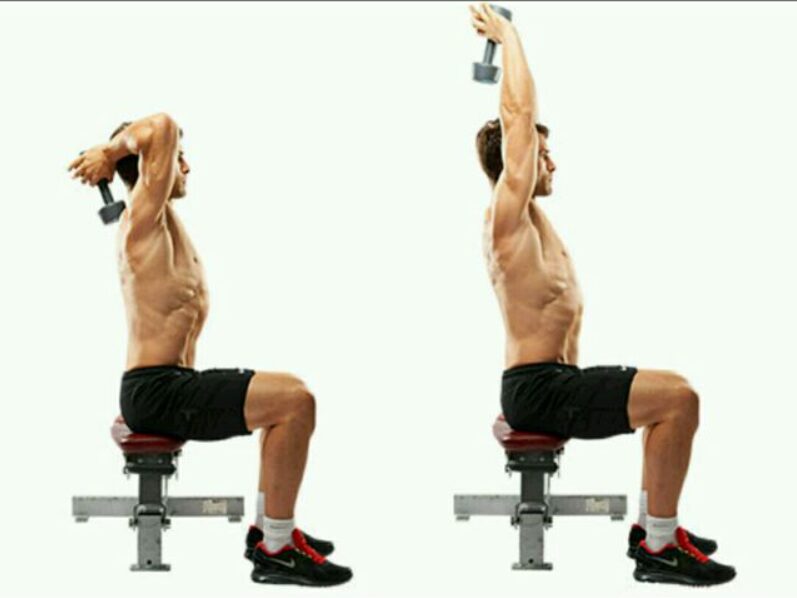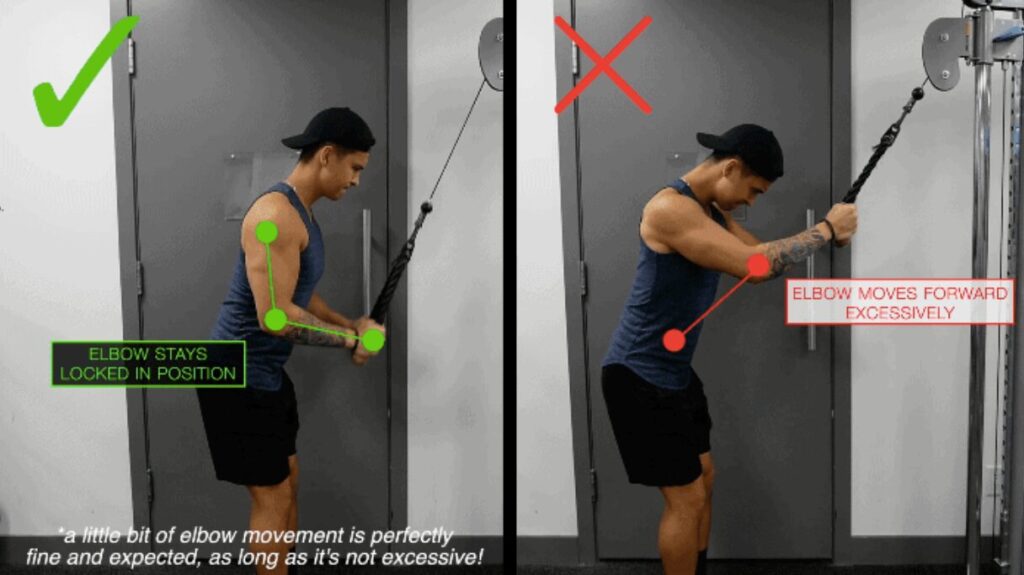Tricep extensions isolate all three heads of the tricep muscle by extending your elbow joint while keeping your upper arms stationary. Begin with elbows high, core engaged, and wrists straight. Then, lower the weight behind your head before extending your arms back up. Avoid flaring elbows, using excessive weight, or locking out at the top. Try overhead, cable, barbell, or lying variations for targeted development. Continue for complete form guidance and programming recommendations to maximize your arm gains.
Anatomy and Muscle Activation Behind Tricep Extensions
The triceps brachii is the main muscle worked during tricep extensions. It involves the lateral, medial, and long. Your triceps contract to extend the elbow joint when you do this isolation exercise.
Tricep extensions are not like compound exercises because they only work the triceps muscle. It lets you focus on building that muscle. Overhead variations really work the long head, but pushdown movements work the lateral and medial heads more. This focused approach makes the elbow joint more stable and makes the whole arm much stronger.

Mastering the Basic Tricep Extension
Mastering proper form for tricep extensions begins with your starting position. Whether standing or seated, keep your spine neutral and core engaged. Position your elbows high and close to your head—this is essential for isolating the triceps and preventing shoulder strain.
Grip the weight firmly but not excessively tight, with wrists straight and stable throughout the movement. As you extend your arms, focus on moving only at the elbow joint while keeping your upper arms stationary. The power comes from your triceps, not momentum.
Different grip variations can target specific areas of your triceps. During resistance training, control the weight in both directions, especially during the lowering phase. Remember to breathe out during extension and in during flexion.

Common Mistakes and How to Avoid Injury During Tricep Extensions
Tricep extensions are a good way to build arm strength, but a lot of people who work out make mistakes that can hurt them and make their results worse. The most common mistake is to flare the elbows out instead of keeping them tucked in, which is necessary for proper tricep isolation.
Using excessive weight often compromises proper technique, causing unnecessary strain on the elbow joints. To avoid getting hurt, start with weights that you can handle and concentrate on moving in a controlled way through the full range of motion. Don’t lock your elbows at the top of the movement, as this puts stress on the joints instead of the muscles.
Remember that progressive overload should come from perfecting form first, then gradually increasing resistance. Always warm up thoroughly before tricep work to prepare the elbow tendons and surrounding tissues for the exercise.

Effective Tricep Extension Variations to Maximize Growth
Several effective tricep extension variations can greatly boost your arm development when strategically incorporated into your workout routine. The overhead tricep extension focuses on the long head of the triceps, making it ideal for adding mass to the back of your arms.
For isolated control, try the cable tricep extension with a rope attachment to maintain constant tension throughout the movement.
The lying tricep extension (skull crusher) works all three tricep heads at once by putting them at a different angle. The barbell tricep extension lets you lift heavier weights, which helps your body grow more overall. If you’re new to these exercises, start with the dumbbell tricep extension with lighter weights to get the hang of it before moving on to harder versions.
Programming Tricep Extensions
To get the best results for your triceps, your programming should balance volume, intensity, and recovery time. When you add tricep extensions to your strength training routine, try to do 3–4 sets of 8–12 reps per workout, and do them twice a week for your upper arms.
The seated tricep extension works particularly well as a finisher after compound movements like bench press or overhead press. For beginners, start with lighter weights and perfect your form before increasing resistance.
More advanced lifters should consider varying rep ranges. Sometimes going heavier (6-8 reps) and other times lighter (12-15 reps).
Don’t isolate triceps every session; integrate extensions strategically within your overall workout routine to prevent overtraining and guarantee proper recovery between sessions.
Frequently Asked Questions
Can I Do Tricep Extensions if I Have Tennis Elbow?
You should avoid tricep extensions if you have tennis elbow. They’ll likely worsen your condition by straining the affected tendons. Consult your doctor about alternative exercises and proper rehabilitation first.
How Long Until I See Results From Regular Tricep Extensions?
You’ll typically notice visible results from tricep extensions in 4-8 weeks with consistent training. Your strength might improve sooner, within 2-3 weeks, especially if you’re a beginner to resistance training.
Should Tricep Extensions Be Performed Before or After Compound Exercises?
You’ll get the most benefit by doing tricep extensions after compound exercises like bench press or push-ups. This way, your triceps are pre-fatigued but not exhausted for the heavy lifting that requires them.
Are Tricep Extensions Effective for Women Wanting Toned Arms?
Yes, tricep extensions are highly effective for women seeking toned arms. They’ll target the back of your arms precisely, helping you reduce arm flab and create that sculpted look you’re aiming for.
Can Bodyweight Alternatives Replace Weighted Tricep Extensions Effectively?
Yes, diamond push-ups and bench dips are two bodyweight exercises that can help you work your triceps. They might not give you the same isolated focus, but if you do them with the right form, they will still build strength and definition.



